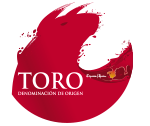It is believed that the Romans (210 BC) were the true promotors of winegrowing in the Douro Basin after invading the previously Vaccean territory and completely destroying the city under the orders of the Carthaginian general Hannibal.
On 11 January 1505, the famous 83 laws were proclaimed in Toro, which was the seat of the Court; centuries later, the city would be consolidated as the capital of the province. Over the years, a number of documents have organised, regulated and recognised wine cultivation and its importance to the city’s economy. Toro wine travelled to the New World and christened its discovery due to the characteristics that made it last and hold up well over long journeys.
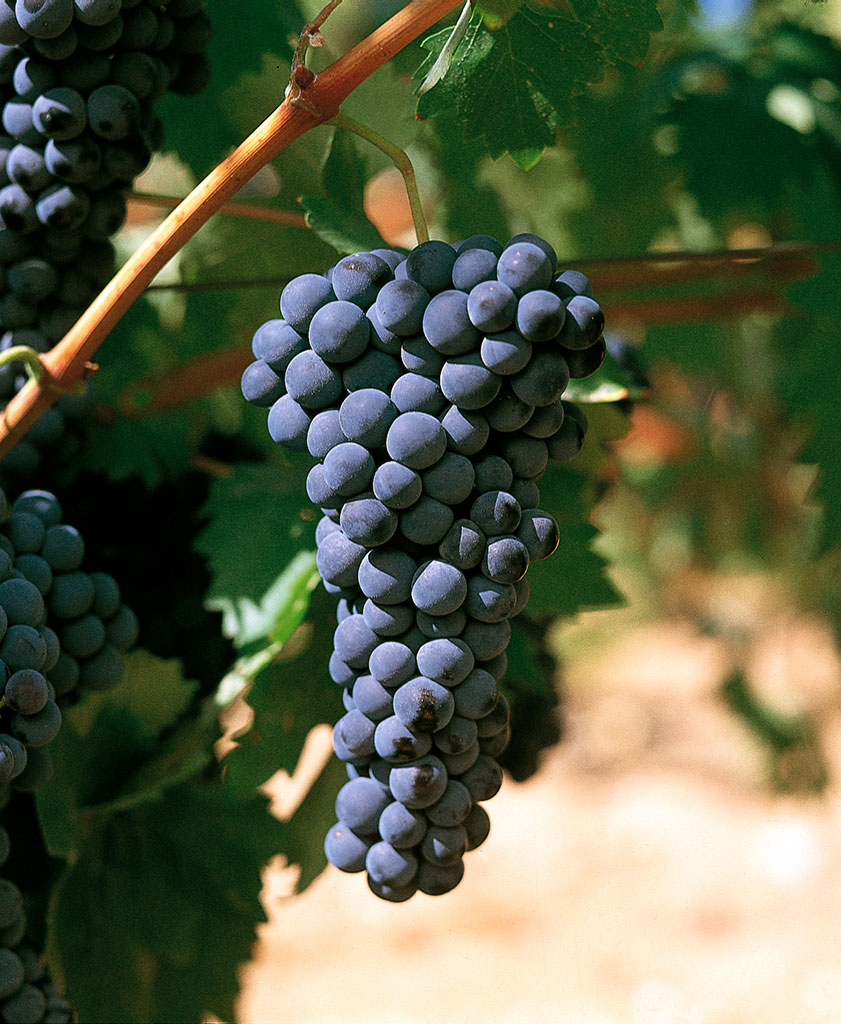
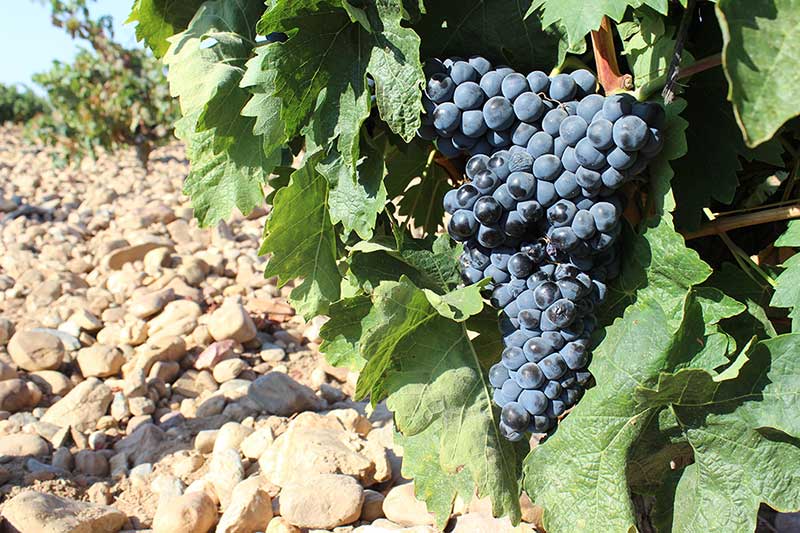
TINTA DE TORO
Native and unique,
with a name of its own.
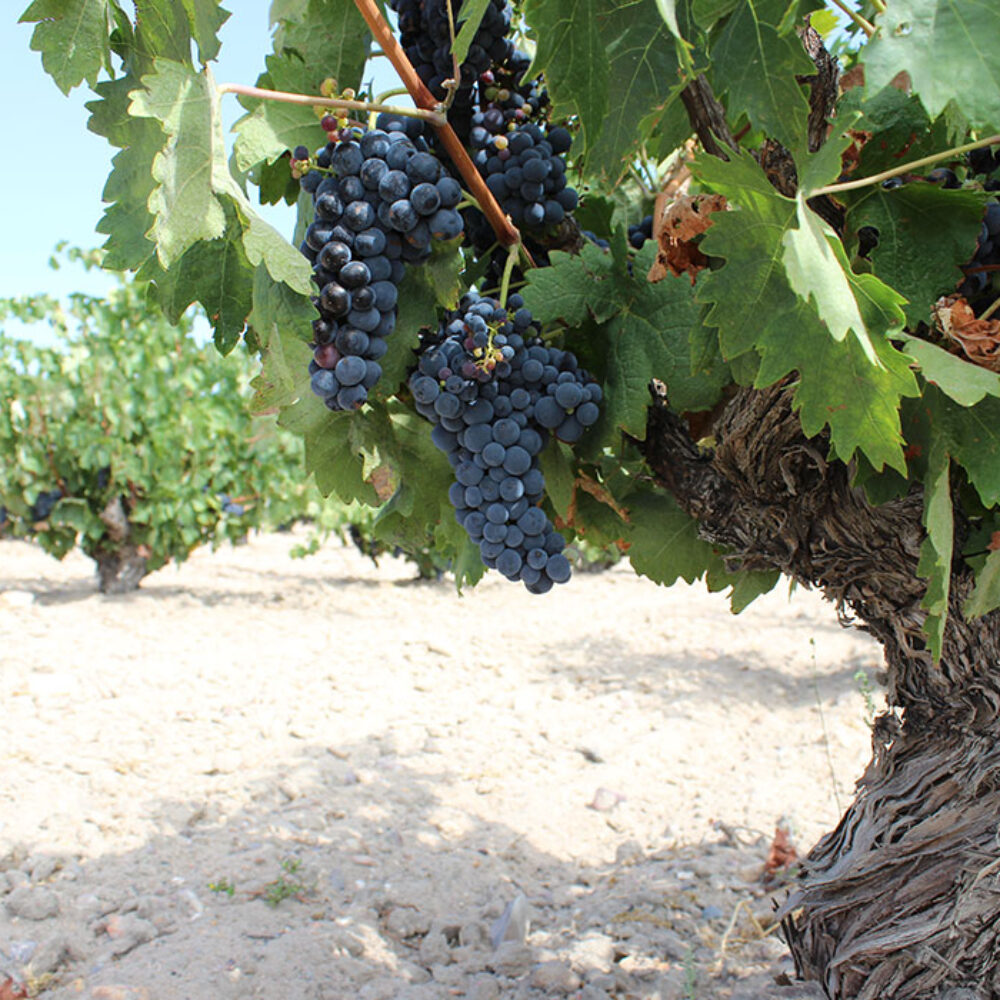
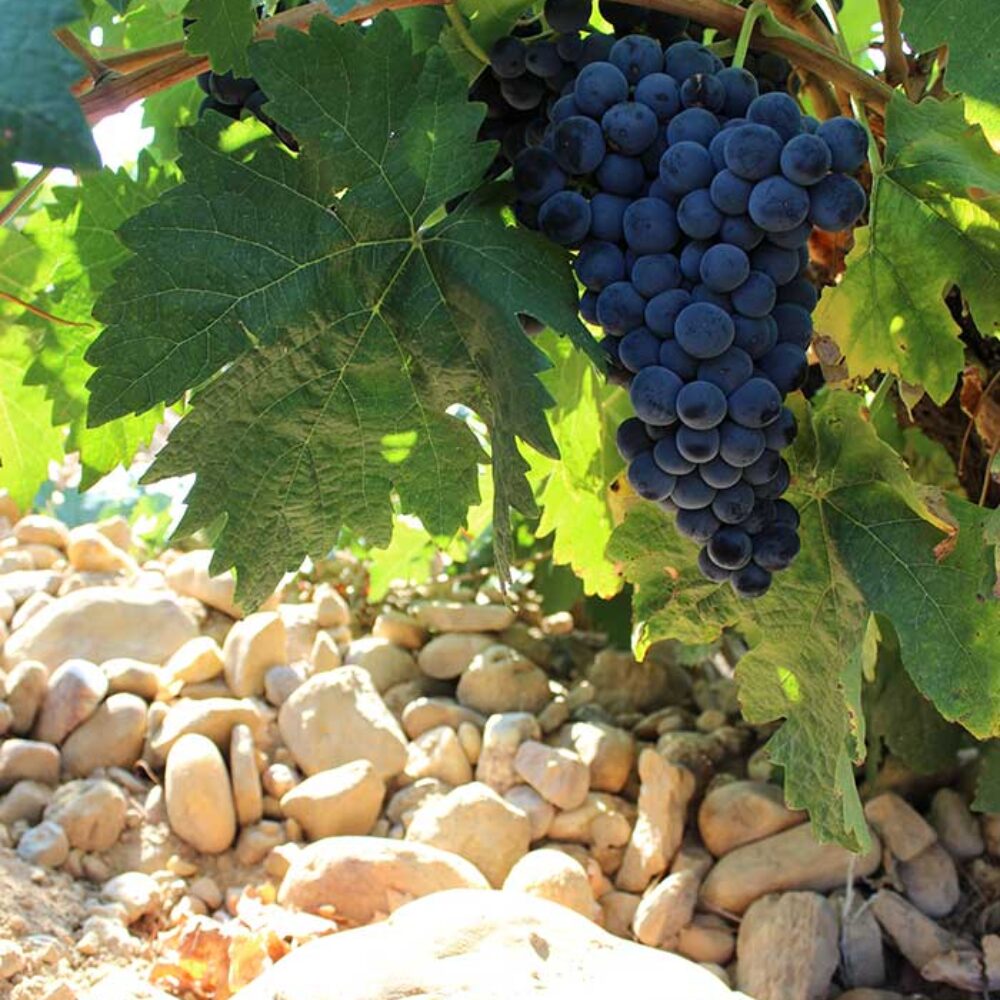
After the phylloxera infestation in Spain in 1870, grape cultivation underwent a great transformation. In Toro, the Tinta de Toro variety took root in loose, well-draining, sandy soils, with the widespread cultivation of ungrafted vines being conserved to this day. Toro had its own Oenological Station located in the city that provided technical services to meet the demands of winegrowers at the time. On 26 May 1933, Toro was officially classified as a Designation of Origin for the first time. (Gazette published 4 June 1933)
In 1990, the Castilla y León Regional Government launched a cloning and health selection plan for the grapevines, rescuing and multiplying the native varieties of the area, including Tinta de Toro, which is today a certified native variety with a name of its own and well-defined agronomic and ampelographic characteristics. It is sold with a blue label and its corresponding clone number.
CHARACTERISTICS
Colour
Red grape
Main use
Winemaking
Extension
D.O. Toro Native Variety
Vine growth
Semi-upright
Vine shoots
Hairless, with a continuous contour and interspersed maroon and green layers of colour.
Tendrils
Distribution in discontinuous pairs, of medium length, bifurcated or trifurcated.
Leaves
Medium-sized, pentagonal with five lobes and five well-defined sinuses, deep green in colour with a matte sheen. When the grape-ripening cycle ends, interspersed purple leaves appear.
Underside of the leaf
Well-defined, whitish and hairy main veins, poorly defined venules, also hairy. Overall, the underside is bristly, with medium hair density and a flexuous appearance, becoming woolly when rubbed.
Leaf teeth
Rectilinear, long and not very numerous.
Petiolar sinus
With overlapping edges.
Upper and lower lateral sinuses
Well-defined and often with overlapping edges. Between the lateral and lower sinuses and the petiolar sinus, a mark appears that forms the outline of two or more sinuses.
Leafstalk
Layered colour between green and rose with fine hairs.
Leaf blade
Wavy
Clusters
Long and cylindrical with shoulders.
Grapes
Spherical with a flattened, medium-sized umbilicus, blackish-blue in colour, with colourless flesh and thin skins. When ripe, coloured veins appear in the flesh.
Seeds
Normally we find two or three medium to large-sized seeds.
UVAS
VARIEDAD TINTA
Tinta de Toro
Variedad autóctona por excelencia de cuyos orígenes apenas se tiene información.
Se considera que fueron los romanos (210 a.C) los verdaderos promotores de la viticultura en la cuenca del Duero, invadiendo el territorio anteriormente vacceo y destruyendo totalmente la ciudad a las órdenes del general cartaginés Anibal.
El 11 de enero de 1.505 se proclaman las 83 leyes en Toro, siendo esta sede de las Cortes; una ciudad que siglos más tarde se consolidaría como capital de provincia. Son numerosos los documentos que a lo largo de estos años ordenan, regulan y reconocen el cultivo de la vid y su importancia económica en la ciudad. El vino de Toro viajó al nuevo mundo bautizando su descubrimiento, debido a características que le hacían perdurar y conservarse en tan largos viajes.


TINTA DE TORO
Autóctona e irrepetible,
con nombre propio.


Tras la invasión filoxérica en España en el año 1.870 el cultivo de la vid sufre una gran reconversión, y es en Toro donde la variedad Tinta de Toro ancla sus raíces en terrenos arenosos sueltos y bien drenados, conservándose hasta nuestros días la multiplicación del viñedo en pie franco. En esta fecha Toro cuenta con Estación Enológica propia ubicada en la ciudad prestando servicios técnicos a las demandas vitivinícolas del momento. El 26 de mayo de 1933 a Toro se le otorga por primera vez la Denominación de Origen. (Publicación Gaceta 4 de junio de 1933)
En el año 1990 la Junta de Castilla y León se ve inmersa en un plan de selección clonal y sanitaria de la vid, rescatando y multiplicando las variedades autóctonas de la Comunidad, entre ellas la Tinta de Toro, la cual goza en este momento del sello de certificación como variedad autóctona, con nombre propio, con características agronómicas y ampelográficas bien definidas. El comercio de la misma se expide con etiqueta azul y su número de clon correspondiente.
CARACTERÍSTICAS
Color
Uva Tinta
Empleo principal
Vinificación
Extensión
D.O. Toro Variedad Autóctona
Porte de la cepa
Semierguido
Pámpanos
De contorno continuo, sin vellosidad y de coloración laminada intercalando tonos granates y verdes.
Zarcillos
Distribución en pares discontinuos, de longitud media, bi o trifurcados.
Hojas
De tamaño medio, pentagonal con cinco lóbulos y cinco senos bien definidos, de color verde intenso con brillo mate. Cuando finaliza el ciclo de maduración de la uva aparecen hojas cárdenas intercaladas.
Envés de la hoja
Nerviaciones principales blanquecinas, con pelos y bien definidas, internerviaciones poco definidas, también vellosas. En su conjunto el envés presenta una vellosidad arañosa, con una densidad de pelos media y de aspecto flexuoso, con el roce originan lanosidad.
Dientes de las hojas
Rectilíneos largos y no muy numerosos.
Seno peciolar
Con bordes superpuestos.
Senos laterales superiores e inferiores
Bien definidos y frecuentemente con bordes superpuestos. Entre los senos laterales e inferiores y el seno pecilar aparece una cicatriz que marca el contorno de dos senos o más.
Peciolo de las hojas
De coloración laminada entre verde y el rosáceo con tenue vellosidad.
Limbo
Ondulado
Racimos
Cilíndricos largos con hombros.
Uvas
Esféricas con ombligo aplastado de tamaño medio, de color azul negruzco, con pulpa incolora y hollejos finos. En la maduración aparecen venas coloreadas en la pulpa.
Pepitas
Normalmente nos encontramos dos o tres pepitas de tamaño medio-grande.
